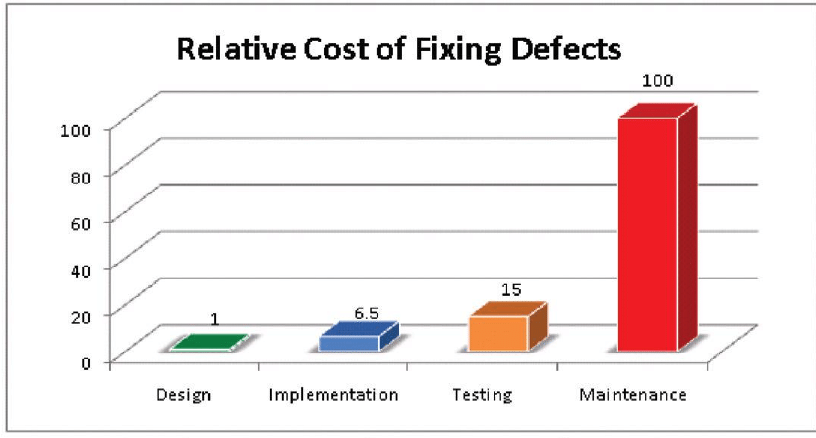
“Shift Left” – Misconceptions and Quality
In the realm of software development and quality assurance, the term “Shift Left” has gained significant traction in recent years. Coined to describe a shift in mindset and approach, it has sparked a variety of interpretations and perceptions among professionals. To get the value from this concept and mindset, it is crucial to separate misconceptions from reality when discussing its implications for quality and the development process. Here, we will delve into what people often think when they hear the term “Shift Left” and explore its true meaning within the context of quality and the overall software development lifecycle.
The Misconception
Misconceptions about “Shift Left” often stem from an oversimplification of its meaning. Some may perceive it as a mere shift in timeline, where testing and quality activities are moved earlier in the software development cycle. Some say it means you don’t need Quality Assurance engineering. Others believe it means using tools to “create quality.” These narrow interpretations fail to capture the holistic nature of the concept and its profound impact on the quality of the process.
Quality Implications
When correctly understood, “Shift Left” represents a fundamental shift in mindset, placing a strong emphasis on proactive quality assurance throughout the software development lifecycle. After all, in any discipline, quality cannot be tested into what you produce – it must be a consideration from the beginning of the process. “Shift Left” entails involving quality activities, such as requirements, design review, code analysis and testing, earlier in the process to catch defects and issues at their inception. By doing so, organizations aim to identify and address potential problems at an early stage, reducing the likelihood of expensive and time-consuming fixes later on.
The key idea behind “Shift Left” is to instill a culture of quality consciousness within product, testing, and development teams. It encourages collaboration between managers, product owners, developers, testers, and other stakeholders, ensuring that everyone takes responsibility for quality from the outset. This integrated approach promotes faster feedback loops, enabling prompt identification and resolution of issues, ultimately leading to improved software quality.
While all areas of quality can be positively impacted by “Shifting Left,” some areas have been significantly transformed. Two great examples of this are security and compliance. Traditionally (and still, in a great many enterprises), once a “release candidate” is completed by engineering and QA, separate teams verify that the release meets security and compliance standards. These additional checks frequently find something that the teams responsible for security and compliance feel need to be addressed, which means sending it back to engineering (who has moved on to the next set of work) to be “fixed” and re-tested. This process causes not only frustration and waste through context-switching, it causes cascading delays and missed deadlines. In this scenario, the current release is held up by this loop, but it also impacts the next release as well. Because issues were found, leaders often take this as evidence that this process is working and necessary.
Benefits of a “Shift Left” Approach
Early Issue Detection and Correction
By moving quality activities to the left in the development cycle, teams can catch defects (i.e. unexpected impacts from the changes they made to the code), security vulnerabilities, and compliance issues earlier, preventing them from propagating into subsequent stages. As a rule of thumb, any issue that proceeds from one stage to the next costs an order of magnitude more to correct, and if it goes two stages further, the cost goes up another order of magnitude.

This graphical representation shows that issues found during traditional QA testing (Integration / System / Acceptance Testing) cost three times as much to fix than if they were caught in coding. From this you can see that “shifting left” significantly reduces cost while also reducing the likelihood of inadvertently accumulating technical debt.
Enhanced Collaboration and Communication
“Shift Left” also encourages open collaboration between developers, testers, and other team members, fostering a shared understanding of quality objectives and requirements. When an entire team values and commits to shipping a quality product rather than completing tasks, it is transformative in terms of team dynamics and the impact potential of that team (this is actually a subtle, but significant side effect of the Product Mindset). This collaboration enables quicker identification and resolution of quality issues and promotes a culture of collective responsibility.
Agile and Efficient Development
Integrating quality practices early in the development process aligns with the principles of Agile methodologies. It facilitates faster iterations, reduces rework and waste from context switching, improves overall development efficiency, and positively impacts predictability (e.g. on time releases and fewer escaped defects discovered by users/customers).
Improved Customer Satisfaction
By delivering higher-quality software, organizations can enhance customer satisfaction and build stronger relationships with their user base. Early detection and resolution of issues contribute to a better user experience and increased trust in the product. A less obvious benefit is that by “shifting left,” compliance and security steps can be integrated into development so that fixes to issues that are found by customers can be resolved faster. Being responsive in this manner builds trust with customers.
Resistance to “Shift Left”
Organizations and individuals are likely to face some internal and leadership resistance to implementing a “Shift Left” approach effectively. This pushback can manifest in various forms such as cultural resistance, lack of awareness or understanding, resource constraints, or simply the difficulty of changing established processes. Some groups may feel threatened by this approach as well.
One of the most important dependencies of achieving the benefits of “shifting left” is a shift in mindset and culture within teams and organizations. Shifting left requires a proactive and collaborative approach, where quality is not seen as a separate phase or responsibility of quality assurance, but rather as an integral part of the development process. Overcoming this cultural barrier often requires education, training, and promoting a shared understanding of the benefits and value of early quality practices. It can be very effective to start small and build momentum. Incorporating teams that might be threatened in designing the new Software Development Lifecycle can transform threat into opportunity. For example, your security team can get involved in selecting, tuning and monitoring static code analysis and dynamic code analysis tools. This allows them to see changes as they are happening and even assist engineers when they face trickier challenges or need coaching.
In Sum
Understanding the true essence of “Shift Left” means understanding that it goes beyond testing and is not only a software testing term. Shift Left is a mindset and total commitment to a shared view of what quality means for a team/product/organization. It extends far beyond a simple timeline adjustment, and demands a paradigm shift towards proactive quality assurance. By embracing a “Shift Left” mindset, organizations can foster collaboration, prevent defects, and enhance overall software quality. Recognizing the importance of this holistic approach, teams can create a culture of continuous improvement and deliver outstanding products that meet or exceed customer expectations.
At 3Pillar Global, we have developed a Product Development Health Index™ that encompasses the concepts of “Shift Left” (among other modern concepts, frameworks and techniques). We use this index to help clients improve as product companies by looking at all aspects of their SDLC, including tooling and collaboration, and we make regular recommendations on how they can improve in their context – by working side-by-side with them in their context, not preaching.
Recent blog posts

Stay in Touch
Keep your competitive edge – subscribe to our newsletter for updates on emerging software engineering, data and AI, and cloud technology trends.



